
Although Corsair and G.Skill are basking in the limelight of PC Gaming, Team Group (and T-Force their gaming brand) has been toiling away in the background to offer great products at a relatively low price.
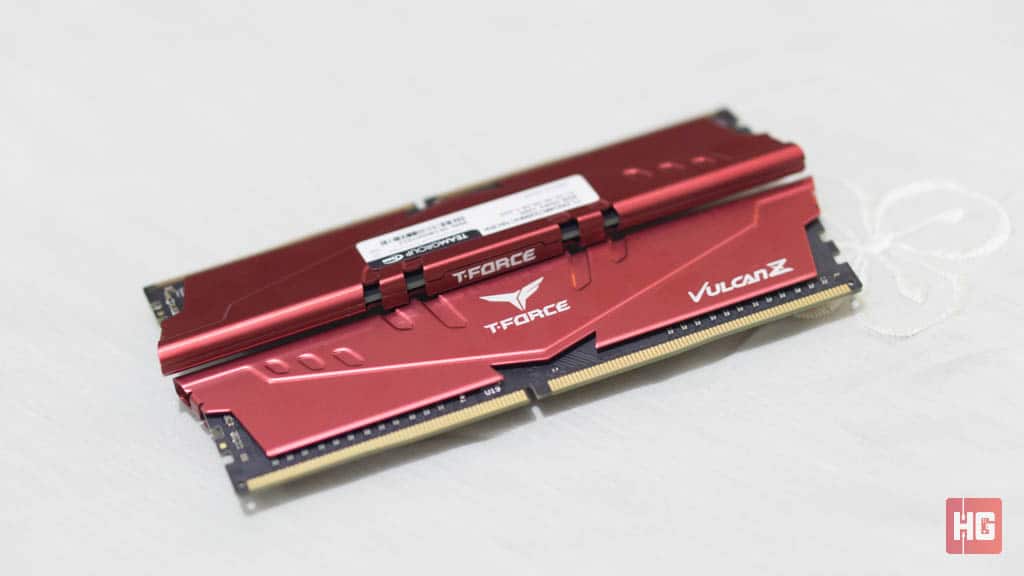
In this review, we’ll be taking a look at the Team Group T-Force Vulcan Z 2x 8GB DDR4-3200 RAM kit. While it doesn’t have RGB lighting like a lot of its competitors, it offers decent performance without breaking the bank.
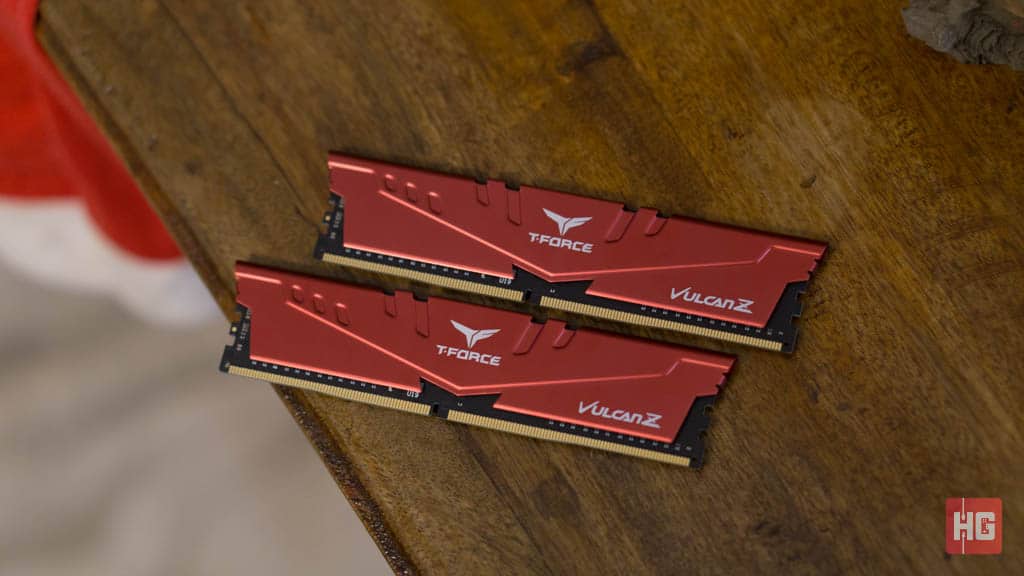
| Memory Type | DDR4 |
| Capacity | 2x 8GB (16GB) |
| Multi-Channel | Dual-Channel |
| Rated Speed | 3200Mhz |
| Rated Timings | 16-18-18-38 |
| Voltage | 1.2v, 1.35v |
| Registered/Unbuffered | Unbuffered |
| Error Checking | Non-ECC |
| Height | 32.0mm |
| Warranty | Limited Lifetime |
| Features | Intel XMP 2.0 |
| Colors | Red, Grey |


While almost every Facebook group and subreddit about PC Gaming show off RGB RAM kits, the T-Force Vulcan Z removes the unnecessary lightshow and instead opts for a more traditional low-profile design.
The T-Force Vulcan Z is available in two color variants: Red and Grey. The one we have on hand is the Red version. The aluminum cover that envelops the PCB of the RAM kit acts as protection as well as a heatspreader to dissipate heat from the chips inside.
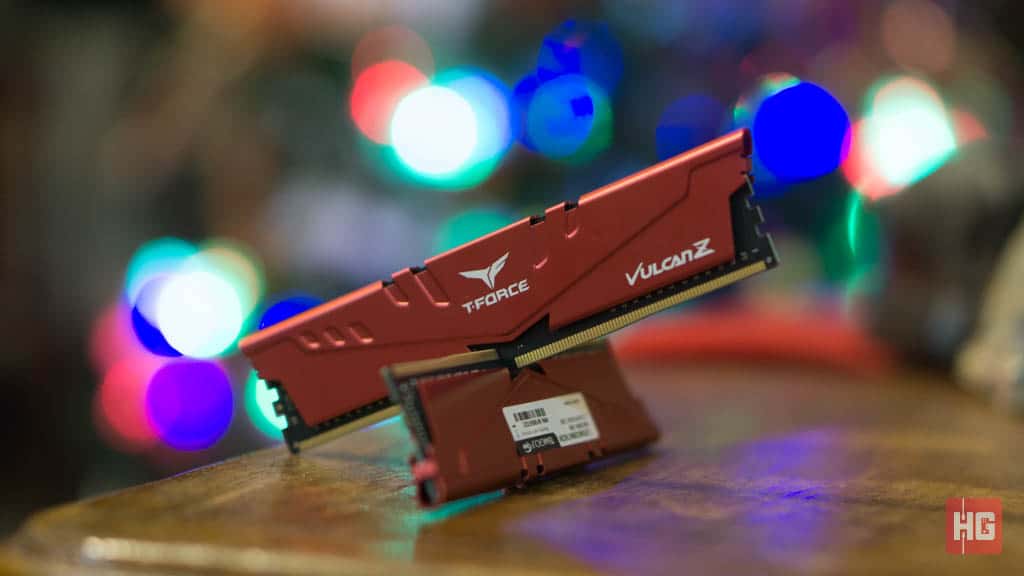
The T-Force Vulcan Z is split into two DIMMs. Inside each DIMM are eight 1024MB chips in a single-rank configuration courtesy of Hynix. The 32.0mm height of each DIMM allows maximum compatibility to most tower coolers but it’s still imperative that you check if the cooler you have will fit your RAM kit.
Meant to operate at Dual-Channel mode, the Team Group rates the T-Force Vulcan Z at 3200MHz at CL16 (16-18-18-36). It is XMP 2.0 compatible allowing you to easily choose its optimal clock speeds, timings, and voltages via the BIOS.
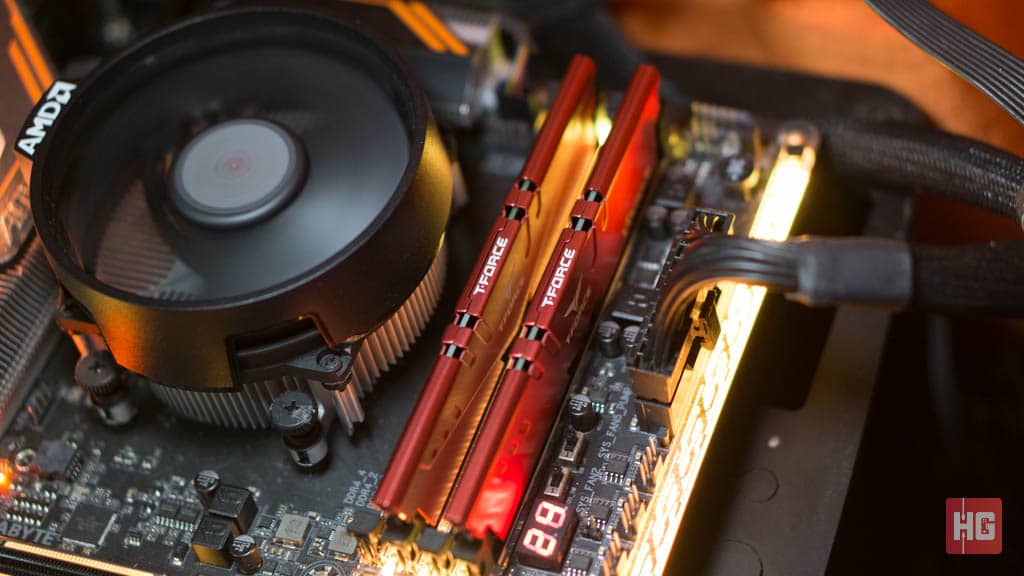
For this review, we’ve used a Gigabyte X470 Aorus Gaming 7 WiFi that supports up to 4133MHz RAM kits. Support for higher frequencies can also allow us to overclock the T-Force Vulcan Z and see if we can squeeze a bit more performance out of it.
We were able to achieve a little bit of an overclock with the T-Force Vulcan Z. With default XMP timings, the kit reached 3466MHz. Tighter 15-17-17-35 timings is also possible although we needed to turn down the clock speed to 3333MHz. Lower timings or higher frequencies led to instabilities in Windows even when the voltage has been turned up to 1.45v.
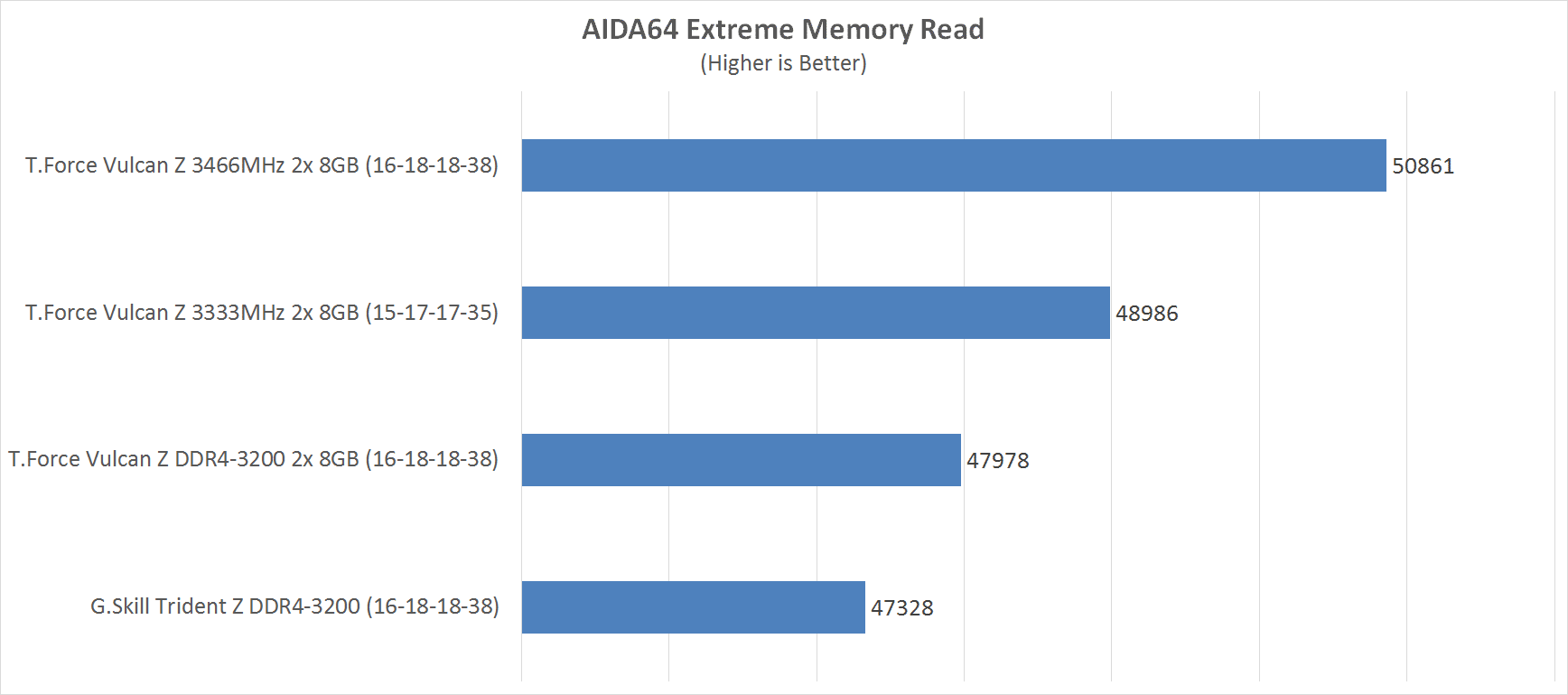



“AIDA64 implements a set of 64-bit benchmarks to measure how fast the computer performs various data processing tasks and mathematical calculations. Multi-threaded memory and cache benchmarks are available to analyze system RAM bandwidth and latency.”
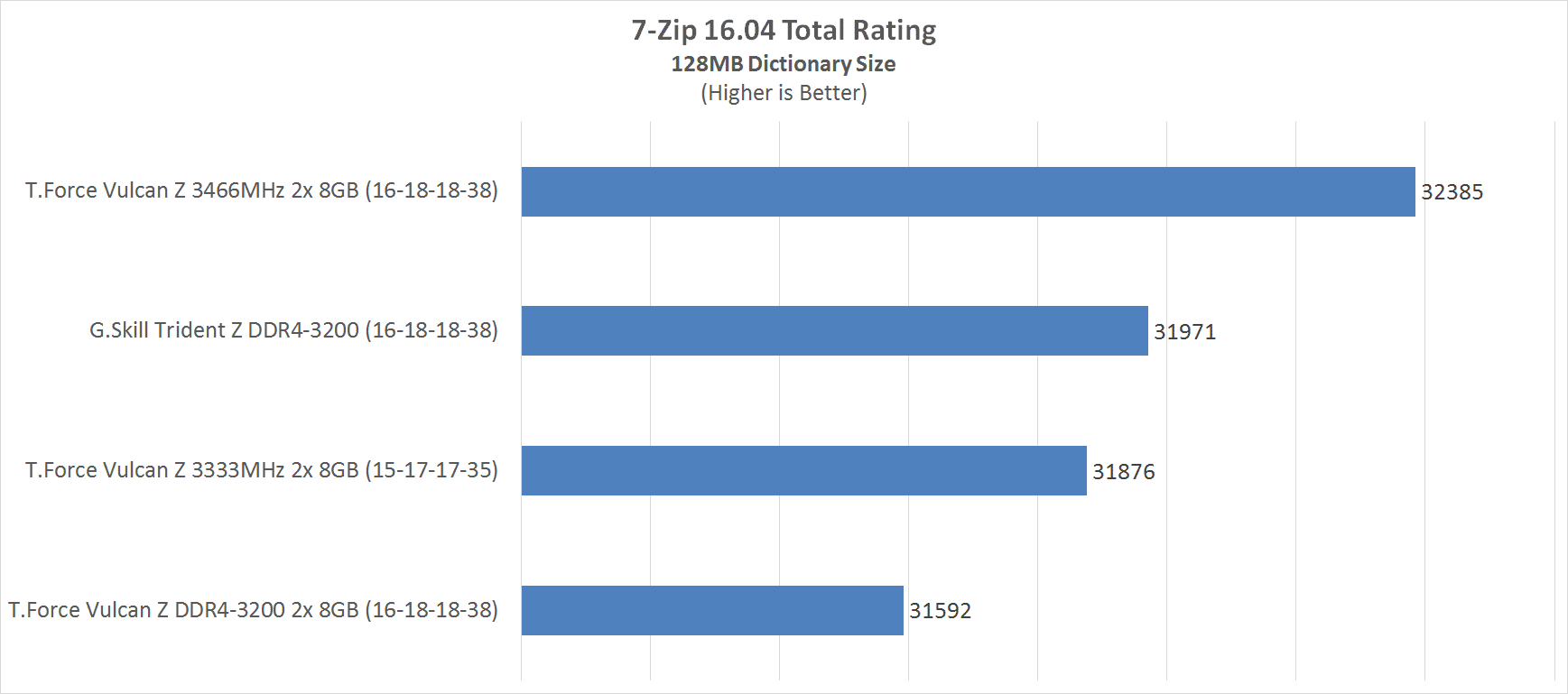
“7-Zip is a file archiver with a high compression ratio for ZIP and GZIP formats, which is between 2 to 10% better than its peers, depending on the exact data tested. And 7-Zip boosts its very own 7z archive format that also offers a significantly higher compression ratio than its peers—up to 40% higher.”

“Designed to showcase the DirectX 11 API, the Futuremark 3DMark Firestrike became a standard in benchmarking as it not only tests the capabilities of the GPU, but also the capabilities of the whole system for a complete stress test.”
The T-Force Vulcan-Z greatly improves its performance with a higher clock speed. Our 3466MHz overclock yielded the highest results among the stock speeds and faster timings.
All three speeds we were able to achieve with the T-Force Vulcan Z also fared a bit better compared to the G.Skill Trident Z we usually use on our test bench.
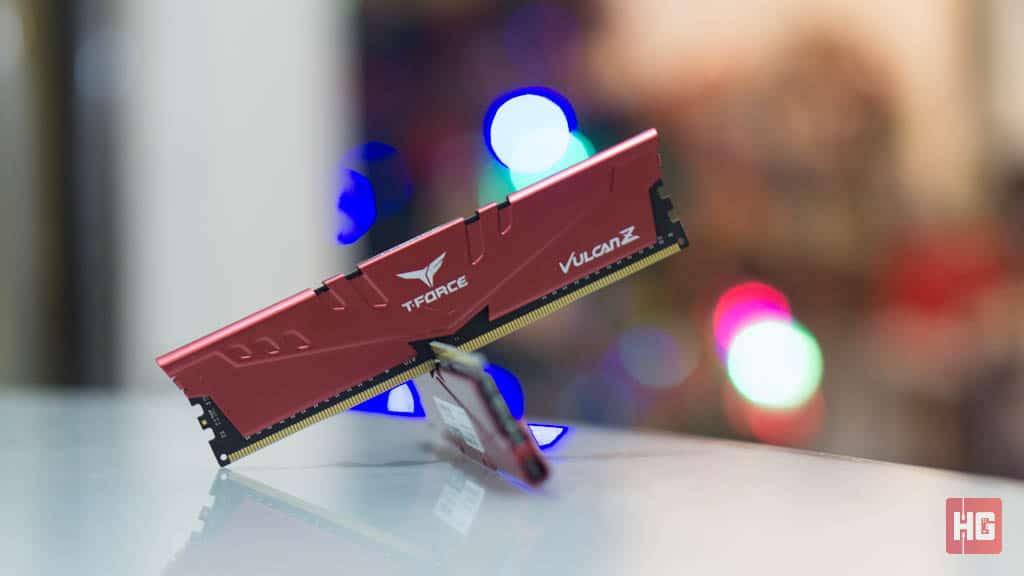
Priced at USD 65.99 or around PhP 4,000 in direct conversion in the Philippines, the Team Group T-Force Vulcan Z DDR4-3200 2x 8GB kit doesn’t come with flashy lights that we’ve grown accustomed to with recent years. It does, however, offer solid performance at a low price.

Its lack of RGB might be troublesome for a few but if you’re building a budget-conscious minimalist build, this RAM will serve you well in your gaming experience. This is why we’re giving the Team Group T-Force Vulcan Z DDR4-3200 2x 8GB RAM kit our seal of approval.
